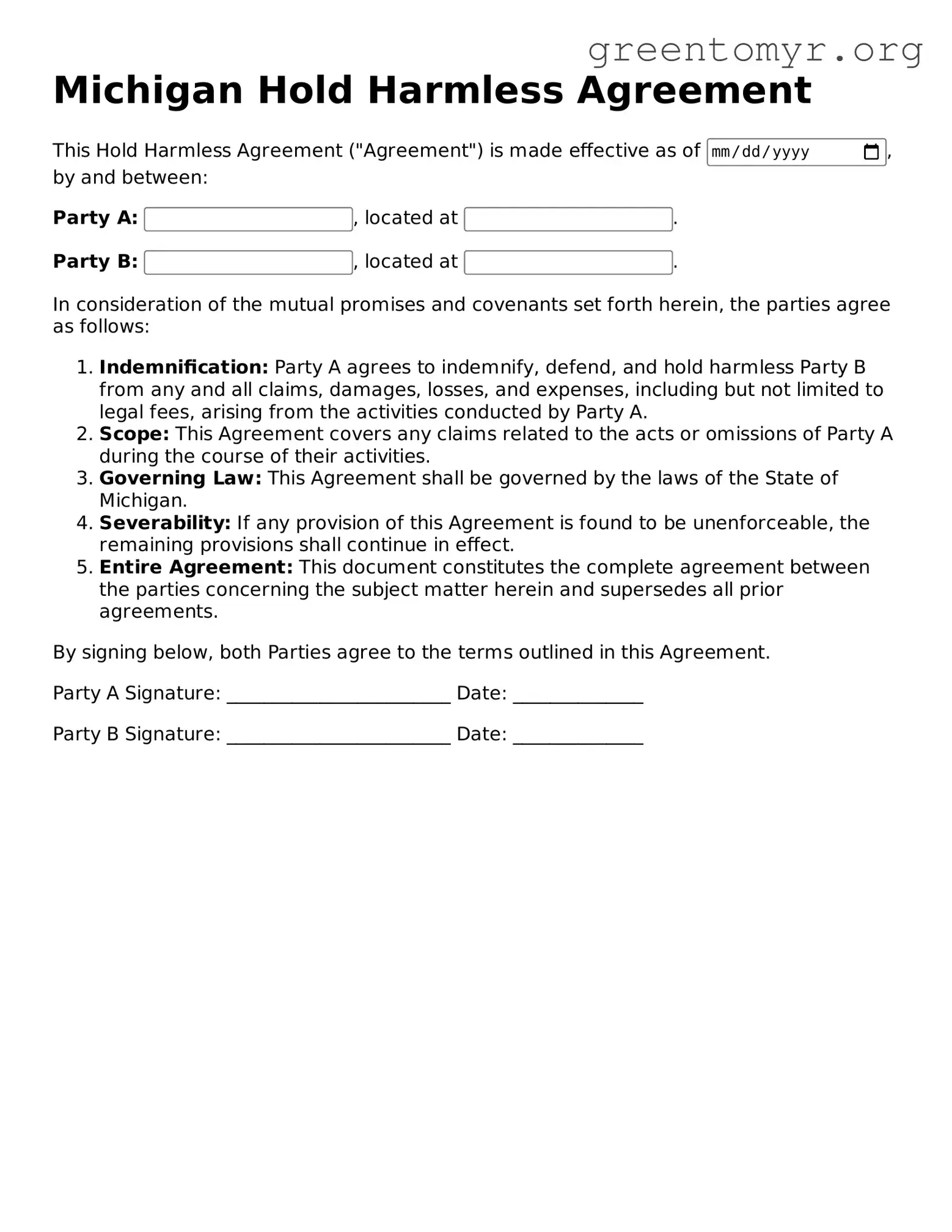Completing the Michigan Hold Harmless Agreement can be a straightforward process, but there are common mistakes that people often make. These errors can lead to misunderstandings and potential legal issues down the line. Being aware of these pitfalls will help in successfully filling out the form.
One frequent mistake is not providing complete information. Applicants sometimes skip sections or fail to include essential details. Every piece of information is vital, as omissions can render the agreement ineffective.
Another common issue is using vague language. It is crucial to be clear and specific about the obligations and responsibilities. Ambiguities can result in varying interpretations, which can complicate future claims or disputes.
The timing of the agreement often gets overlooked. People may not submit the agreement on time. Ensuring that the form is completed before the specified activity or event helps avoid potential liabilities.
Incorrect signatures also pose a significant problem. A Hold Harmless Agreement requires signatures from all parties involved. If a necessary individual neglects to sign, the agreement may not hold up in court.
Some individuals may use outdated forms. Legal documents can change over time, and it’s essential to ensure you have the most recent version of the agreement. Using outdated forms can lead to the invalidation of the agreement.
Additionally, not reading the entire document can lead to errors. Skimming through the text may cause individuals to miss important clauses that could affect their legal rights.
People sometimes assume the agreement absolves all liability. This is not always the case. Understanding what protections the agreement provides is critical for ensuring proper coverage.
Failing to consult a legal professional can also be detrimental. While many agree that they understand the implications, seeking advice ensures a grasp of the nuances involved in the agreement.
Another mistake is neglecting to tailor the agreement. Generic forms may not fit specific situations well. Customizing the document to reflect the unique circumstances can provide better protection.
Lastly, overlooking witness requirements is a common error. Some agreements may need to be witnessed or notarized to be enforceable. Failing to include this step can jeopardize the agreement's validity.
By addressing these ten mistakes, individuals can better navigate the complexities of the Michigan Hold Harmless Agreement and protect their interests effectively.
